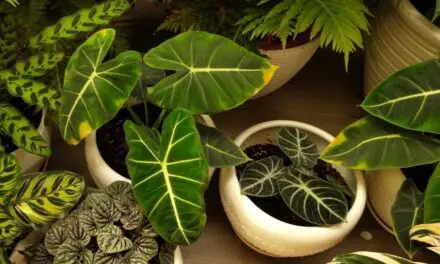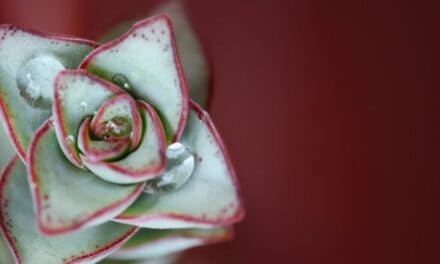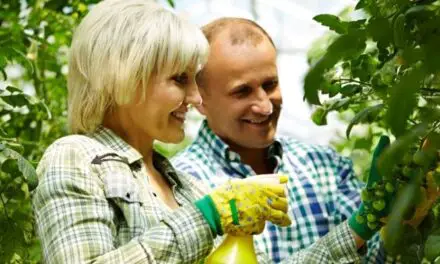Thanks to its amazing flavor and aroma, basil is one of the most popular plants to grow amongst gardeners and home cooks alike.
But some basil growers worry when they see their plant suddenly sprouting flowers and wonder how that’s going to affect the health of the plant going forward.
Table of Contents
Do Basil Plants Die After Flowering?

Basil plants do not die after flowering but they will move from a growth cycle to their reproduction cycle and slow down or stop the production of new leaves so they can use that energy to reproduce.
So if you are growing your basil plant for food, you’ll want to pinch off the flowers so it will encourage the growth of more leaves.
The taste of the basil also changes and becomes more bitter after the plant has flowered.
If you are growing your friendly neighborhood basil, the Ocimum basilicum, then you can also eat the blossoms.
Basil plants don’t usually die until they are exposed to frost.
Also Read: How Long Will A Basil Plant Live?
What Happens If You Leave The Blooms On A Basil Plant?
If you leave the blooms on a basil plant it will shut down and go from growth mode to reproduction mode — and stop producing yummy basil leaves so the plant can focus its energy on flowering and reproducing.
To keep your basil plant in its growth cycle and producing lots of leaves, the flowers and buds will have to be removed from the plant.
How To Remove Buds And Flowers From Your Basil Plant
If you’re interested in harvesting leaves from your basil plant, then you’re going to want to remove buds and flowers as soon as possible.
Remove buds and flowers by cutting down just below the 1st or 2nd leaf set from the top.
Look for where the new leaves are growing out from between the old leaves and stems.
Cut above this area and your basil plant will grow bushier.
The more you trim and prune basil plants the faster they grow.
So, watch out for those flower buds coming back.
What Can Basil Flowers Be Used For?
Basil flowers have to go if you want the plant to continue leaf production.
But that doesn’t mean they have to be thrown out.
You can add basil flowers to a little bowl of water and stick them on the side, where they’ll float around and look and smell amazing.
Don’t forget that basil flowers also taste just like a mild version of a basil leaf.
So, they are great to sprinkle over a salad or just use as a garnish for one of your favorite Thai or Italian meals.
How Do You Increase Yield On Basil?
Basil has an incredible aromatic flavor and it’s the leaves that pack the biggest punch.
Here are a few tips to help maximize leaf growth on your basil plant.
Pinch Off Flower Buds When You See Them
When flowers begin to form, your basil plant will shut down and focus its energy on reproducing.
This causes leaf production to slow down or even completely stop
By pinching off the flower spikes before they get a chance to blossom, you will free up the energy required for your basil plant to produce more leaves.
Basil Leaves are at their most flavourful and have the best aroma when they are harvested before the plant starts to flower.
Pruning
Basil loves to be pruned and trimming it makes it grow a lot faster and bushier.
It may not make much sense to cut away parts of a plant to encourage it to grow, but this is actually one of the best ways to make your basil plant grow really big and really bushy.
When you cut the stems off your basil plant all the way back to a fresh set of leaves, it forces those leaves to start growing and doubles leaf production on that stem.
For exponential growth, keep pinching back stems as they grow and doubling up on production.
Continually harvesting and pruning your basil plant will also help to prolong its life.
Temperature And Sunlight
Basil is native to hot regions and is a serious lover of sunshine.
Put your plant somewhere where it will get loads of sun, around 6-8 hours of direct sunlight each day, if possible.
Lots of strong sunlight will make your basil plant bushy and improve the flavor of the leaves.
Unfortunately, basil plants can’t survive in colder climates and it’s usually frost that kills these plants off.
If your plant is outdoors, you’ll need to harvest the leaves before the first frost hits, otherwise, the plant will die.
Basil prefers warmer weather, so make sure you plant it during the warmer months and move it inside if you want it to last through winter.
Watering And Soil
Basil produces the most leaves when it is planted in really rich soil.
It needs lots of nutrients from the soil to create that delicious flavoring in its leaves.
These plants also don’t like having wet roots so well-drained soil is very important.
Adding a little grit to the compost may also help to avoid waterlogging.
If you are growing your basil in a pot, ensure it has drainage holes and water it in the morning instead of the evening whenever possible.
Depending on how much heat and sun your basil plant is getting, water it every 1 to 2 days and allow the soil to dry a little between watering times.
Try to keep the soil consistently moist. (But never waterlogged)
Overwatering will seriously hinder leaf production and could even cause rot and kill your basil plant.
Fertilization
Basil grows quickly, so it does not require much fertilization.
Too much of it can actually kill your plant.
If, however, you choose to fertilize your basil, all you need is a tiny bit of fertilizer added twice per season, no more than that.
As mentioned before, make sure you prune your plant to enable growth.
Growth means more to harvest during the season, so more yummy basil for you. The more the merrier.
Guard Against Pests
Another hazard that will stop your basil plant from producing lots of leaves is pests.
Lots of insects like to munch on their tender leaves, but aphids can be a particular nuisance.
If you spot the yellowing of leaves and tiny, green wingless insects, you probably have an aphid infestation.
Treatment
You can spray your basil with an organic, plant-friendly insecticide spray.
Or, If your plant is in a pot, you can dunk it in a sink full up with soapy water and wash the aphids off.
And if you’re growing your plant outdoors, you can spray some soapy water on it and wipe the aphids off with a rag.
How To Plant Basil
You need to first prepare the seed by misting it with some water.
Sow it in a starter tray or shallow pan.
Make sure to keep it in a location where it is about 70F.
Don’t worry about watering the seeds until after seedlings emerge.
You should see seedlings in about a week to 10 days after you planted the seeds.
Once the seedlings are visible, move your pot to a sunny place, like your windowsill, and keep your soil moist by misting it frequently.
Once your seedlings start to grow the leaves, make sure you keep the one that looks the best, and the rest can be removed.
Then, move your seedlings into individual pots, and leave them outside.
Do this gradually, so the plant can get used to the outdoor weather conditions.
Make sure it gets plenty of sunshine, but also make sure if you live in a hot area, that you shelter the plant during the hottest time of the day.
How To Use Your Freshly Grown Basil
Basil is so flavourful and so versatile, you can use them for many things.
The most popular way to use it is for PESTO!
Pesto is a mixture of basil leaves, pine nuts, parmesan cheese, and olive oil.
You can use pesto in pasta, on sandwiches, on toast, on your morning eggs, or you can drizzle it over your salads and veggies.
It gives a flavourful twist to your meals.
You can also top your pizzas with fresh basil.
A lovely, classic margarita pizza is always topped with fresh basil leaves.
Italians love basil.
Just have a look at a bruschetta, it is toasted bread with tomatoes, basil, and mozzarella.
It can be added to any soups, or chop the basil up and add it to your salads for an extra aroma.
Now you know how to grow, maintain and use basil.
Final Thoughts
Thankfully, basil plants will not die after flowering.
But, if you are growing basil to use the leaves in cooking, you’ll want to pinch off the flowers as soon as you see them.
This will keep the basil tasting at its best and allow your plant to put more energy into leaf production.




